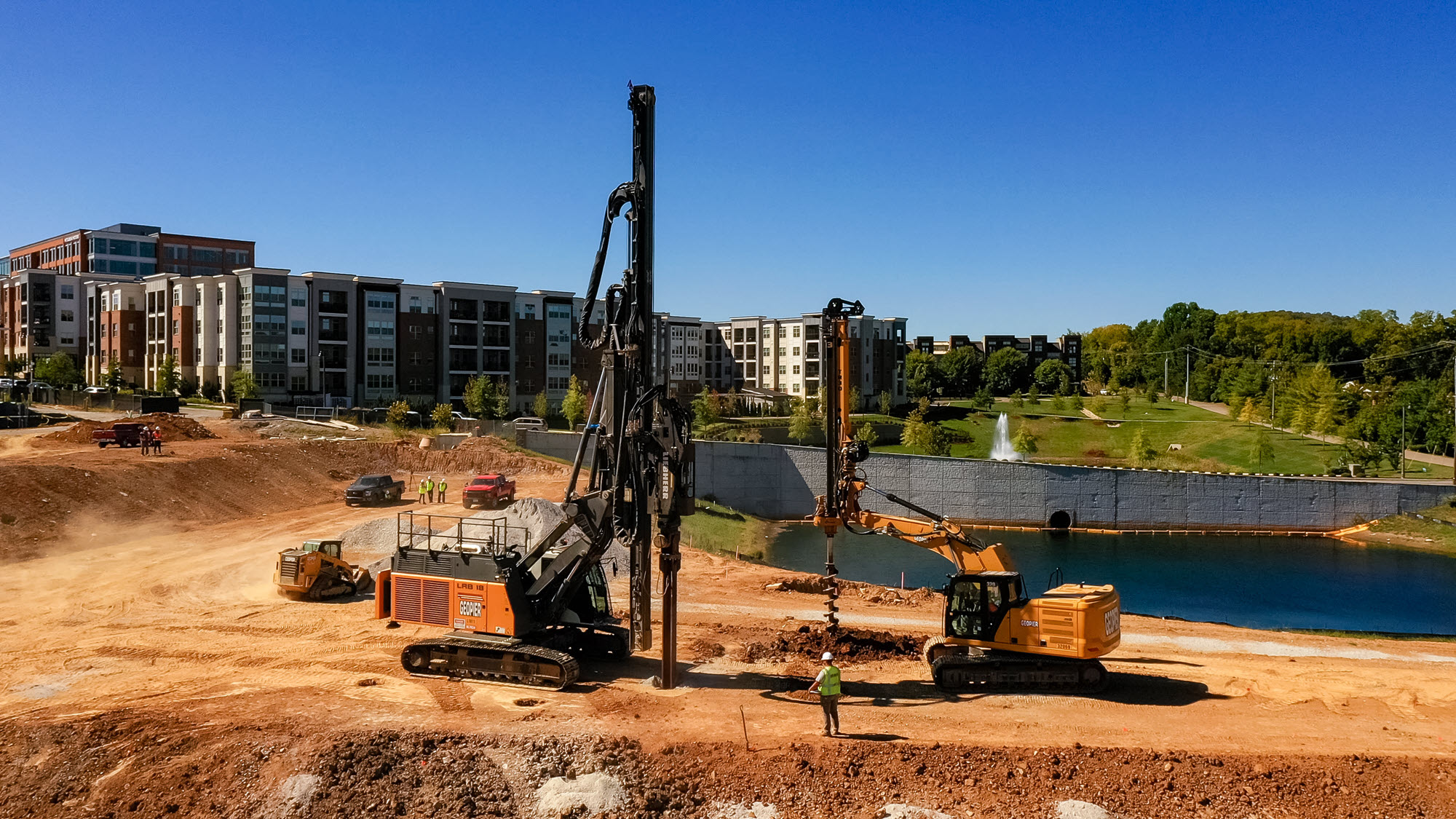Welcome to Geopier’s version of MythBusters, where we dispel some of the Geopier® related myths circulating in the design-build world. This article focuses on two particularly nasty myths:
Myth 1: Geopier can't be installed below the groundwater table
Myth 2: Geopier can't be used to support heavy loads
Our hope is that these MythBusters help you better understand our capabilities so that you can design using Geopier with confidence!

Myth 1: Geopier can't be installed below the groundwater table
We always appreciate when folks recommend Geopier but are equally dismayed when piers are excluded from a project because of the fallacious myth that “piers can't be installed below the groundwater table.” We understand the concern – excavation below groundwater can result in caving soils, which could affect pier performance. This statement is true; however, we have several solutions that address that concern:
- Temporary Casing: For drilled solutions (GP3® and X1®), Geopier can drive temporary casing during pier construction to shore up the excavation and prevent caving soils from contaminating the aggregate pier. The temporary casing is advanced incrementally through the caving soils during drilling and then slowly withdrawn during pier construction to ensure the bottom of the excavation is free of debris and the aggregate is not contaminated with soil.
- Displacement Solutions: Sites with widespread or deep caving soils are better tackled using our displacement solutions (Impact® and Rampact®). The tooling for these solutions provides full depth casing of the hole, akin to pushing a plugged straw though a milkshake. The “straw” displaces the weak soils as it advances, and the sidewalls prevent caving soils from falling into the hole. Once the design depth is achieved, the aggregate is poured through the straw and out the bottom so that the pier can be constructed without contamination by the caving soils.
Geopier is confident that it can install piers below the groundwater table and you should be too!
Myth 2: Geopier can't be used to support heavy loads
The lion’s share of geotechnical design is focused on limiting settlement to 1 inch or less so that the structural engineer’s design can function as intended. Rumor has it that when heavy loads meet poor soils, deep foundations are required because Geopier can't be used to support heavy loads. I am here to inform you that is simply not true!
Geopier has been used on hundreds of projects to support very heavily loaded structures. A few examples for your consideration:
- Parking garages and medical facilities with column loads of 1,500+ kips
- Commercial warehouses with sensitive ASRS systems and column loads of 2,000+ kips
- 150-foot diameter grain bins with area loads of 6,000+ psf (100 million lbs!)
- Freezer warehouses with areal slab loads of 2,000+ psf
- Mid-rise and high-rise structures including a 22-story structure in Canada
We have handled all types of structures in every soil type (including organics) using our arsenal of Rammed Aggregate Pier® and rigid inclusion technologies.
Why use Geopier instead of deep foundations?
- Geopier solutions are almost always cheaper than deep foundations.
- Foundations can be designed as conventional spread footings and slab-on-grade.
- Footings can be excavated immediately after pier installation – no waiting for concrete to cure.
One last consideration… Some heavy structures don’t necessarily need Geopier, but the footings are very large due to low design bearing pressures (3 to 4 ksf). Foundations supported on Geopier can be designed for bearing pressures up to 10 ksf, which allows for smaller footings and significant cost savings!
No matter how heavy the structure, Geopier has a cost-effective solution that meets your needs.
Want to Learn More?
Access Geopier Solutions pocket card to quickly compare common methods of ground improvement techniques.




